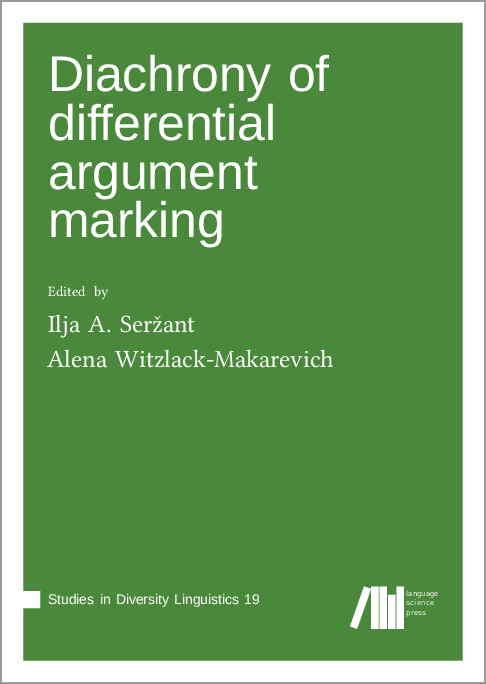We log anonymous usage statistics. Please read the privacy information for details.
Diachrony of differential argument marking
Synopsis
While there are languages that code a particular grammatical role (e.g. subject or direct object) in one and the same way across the board, many more languages code the same grammatical roles differentially. The variables which condition the differential argument marking (or DAM) pertain to various properties of the NP (such as animacy or definiteness) or to event semantics or various properties of the clause. While the main line of current research on DAM is mainly synchronic the volume tackles the diachronic perspective. The tenet is that the emergence and the development of differential marking systems provide a different kind of evidence for the understanding of the phenomenon. The present volume consists of 18 chapters and primarily brings together diachronic case studies on particular languages or language groups including e.g. Finno-Ugric, Sino-Tibetan and Japonic languages. The volume also includes a position paper, which provides an overview of the typology of different subtypes of DAM systems, a chapter on computer simulation of the emergence of DAM and a chapter devoted to the cross-linguistic effects of referential hierarchies on DAM.
Chapters
-
Differential argument marking: Patterns of variation
-
Differential object marking in Chichewa
-
The evolution of differential object marking in Alor-Pantar languages
-
Spanish indexing DOM, topicality, and the case hierarchy
-
From suffix to prefix to interposition via Differential Object Marking in Egyptian-Coptic
-
Verbal semantics and differential object marking in Lycopolitan Coptic
-
A diachronic perspective on Differential Object Marking in pre-modern JapaneseOld Japanese and Early Middle Japanese
-
Nominal and verbal parameters in the diachrony of differential object marking in Spanish
-
Emergence of optional accusative case marking in Khoe languages
-
The rise of differential object marking in Hindi and related languages
-
The diachronic development of Differential Object Marking in Spanish ditransitive constructions
-
Structural case and objective conjugation in Northern Samoyedic
-
Differential A and S marking in Sumi (Naga)Synchronic and diachronic considerations
-
Differential subject marking and its demise in the history of Japanese
-
The partitive AOn uses of the Finnish partitive subject in transitive clauses
-
Some like it transitiveRemarks on verbs of liking and the like in the Saami languages
-
The emergence of differential case marking
-
Reassessing scale effects on differential case markingMethodological, conceptual and theoretical issues in the quest for a universal




